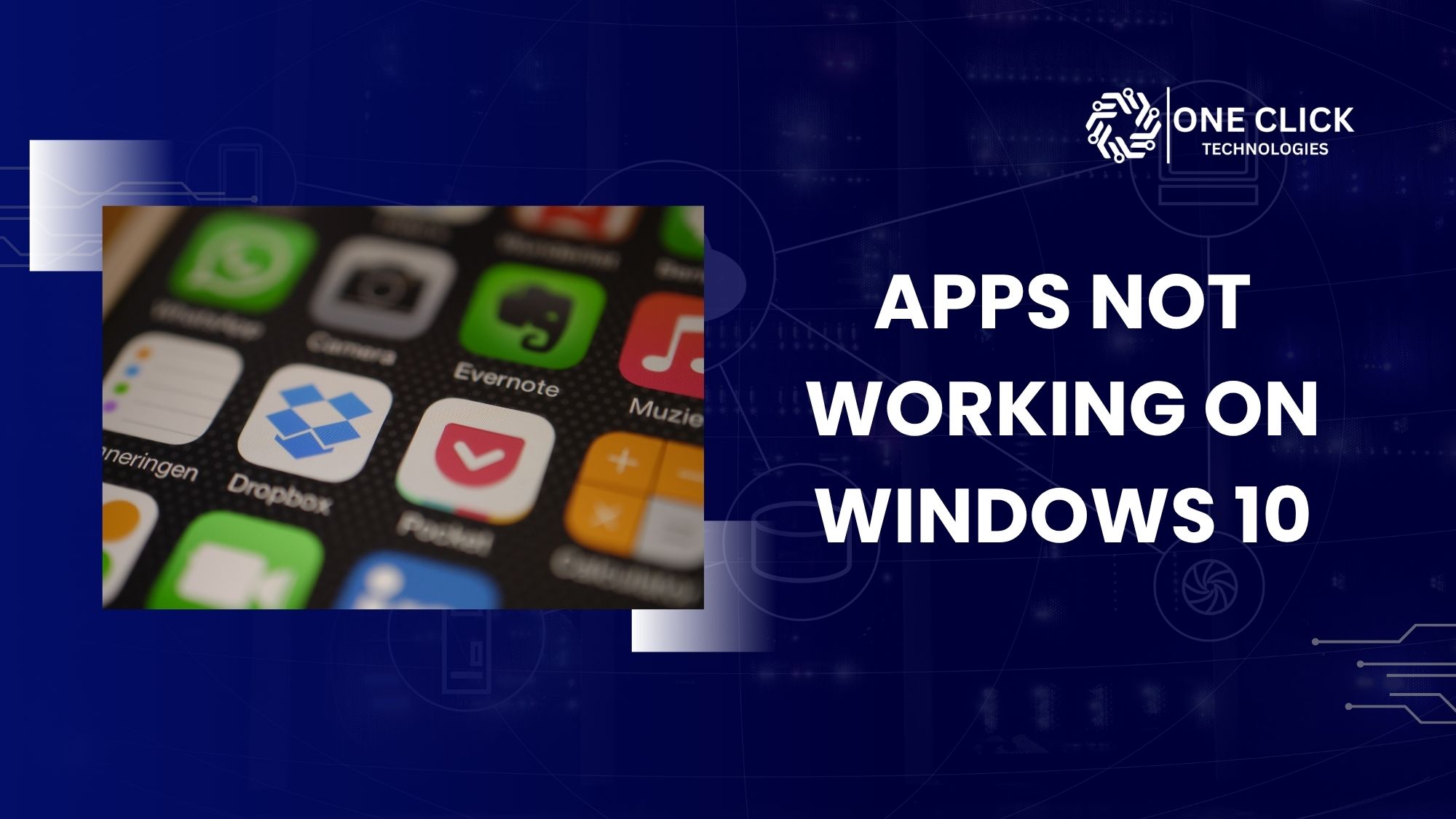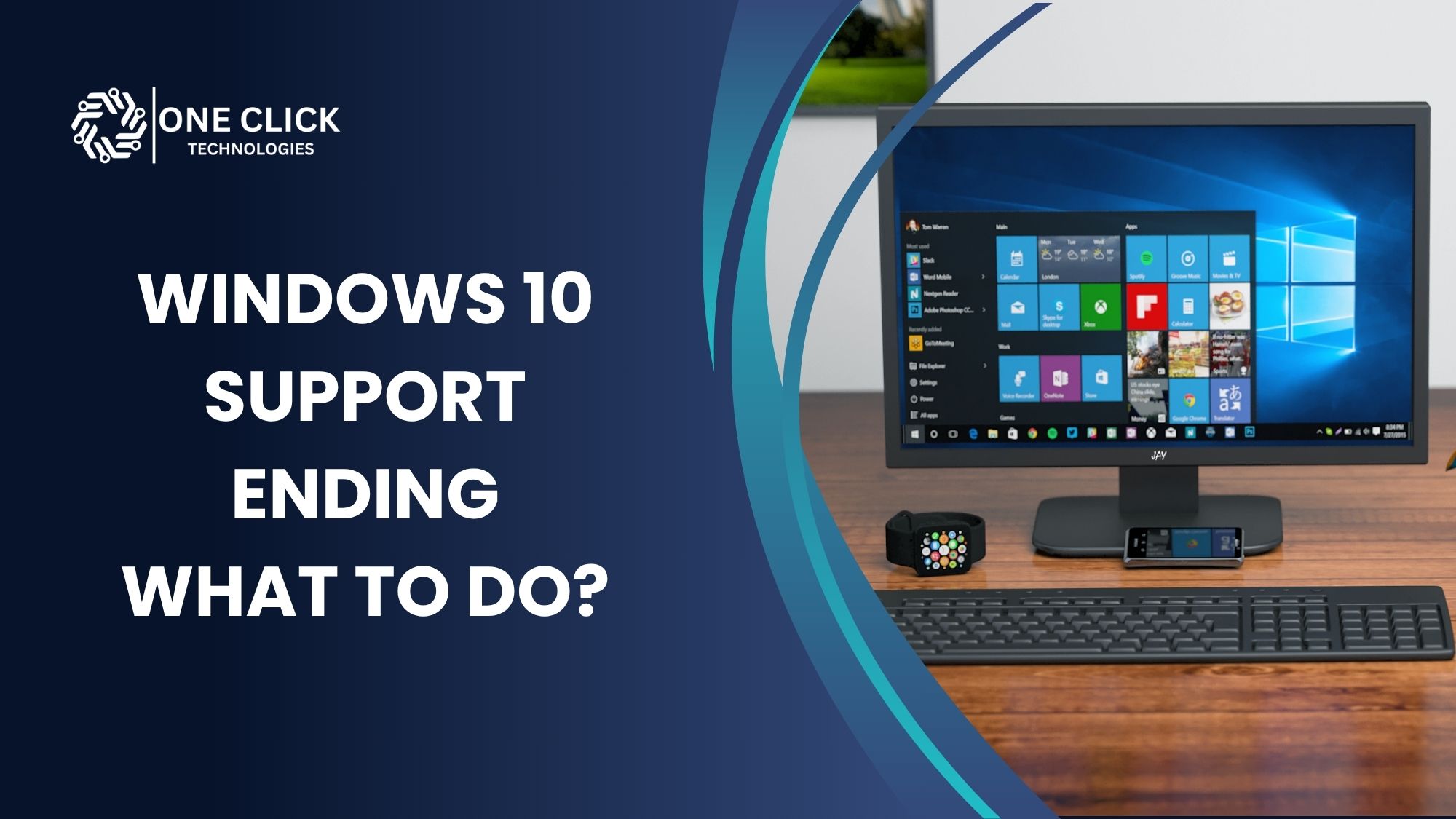Table of Contents
Has your App Stopped Working on Windows 10?
Your app may have stopped working on Windows 10 due to outdated drivers, missing updates, or software compatibility issues.
It’s a frustrating scenario many users face. You double-click your favorite app, maybe it’s a game, a work tool, or a Microsoft Store download, and nothing happens. Or worse, the window flashes for a second and disappears, with no error message to guide you. If this feels all too familiar, don’t worry. You’re not alone, and more importantly, there are practical solutions. In this guide, we’ll explore why apps stop working on Windows 10 and exactly how to fix them.
Let’s bring your apps back to life.
How to Fix Apps Not Opening in Windows 10?
Apps may not open in Windows 10 due to corrupted files, outdated system updates, or conflicts with background processes – restarting your PC, updating Windows, and repairing apps usually fixes the issue.
1. Why Apps Are Not Working On Windows 10
Apps may not work on Windows 10 due to outdated software, missing updates, corrupted system files, or compatibility issues with the operating system.
Before diving into complex fixes, let’s understand what’s happening behind the scenes. Apps not working on Windows 10 can occur due to several reasons:
- Your operating system is out of date
- The app is incompatible with your version of Windows
- Key system files are corrupted or missing
- Conflicting startup programs or background services
- A broken Microsoft Store cache or bugged updates
Sometimes it’s a simple glitch. Sometimes, it’s a deeper system-level issue. Either way, we’ll help you fix it.
2. First Steps: Basic Fixes That Work Wonders
Reboot Your System
It may sound basic, but sometimes a restart is all it takes. Rebooting clears temporary memory (RAM), resets stuck processes, and reinitializes app services. Think of it as giving your Windows system a fresh start.
Update Windows and the App
Navigate to Settings > Update & Security and check for updates. A recent Windows update might fix known bugs that prevent certain apps from opening in Windows 10. Also, make sure your app is updated; older versions often crash due to compatibility issues.
Read: Windows Update Access Denied – Why It Happens and How to Solve It Today
Run as Administrator
If you’re getting permission errors or nothing happens when you click the app, try right-clicking the app and selecting “Run as Administrator.” This is especially helpful when opening developer tools or older programs.
3. Troubleshooting Microsoft Store Apps
Many users face issues with Microsoft Store apps not opening in Windows 10. If you’re seeing problems like “app not opening,” “store won’t load,” or “settings app not opening,” here’s how to fix it:
Clear Microsoft Store Cache
- Press Windows Key + R
- Type
wsreset.exe - Hit Enter
This command resets the Microsoft Store cache without affecting installed apps. Often, this simple step fixes store download and launch issues.
Re-register the Microsoft Store
Open PowerShell as an administrator and run this command:
Get-AppxPackage -allusers Microsoft.WindowsStore | Foreach {Add-AppxPackage -DisableDevelopmentMode -Register "$($_.InstallLocation)\AppXManifest.xml"}
This reattaches the store to your Windows 10 system, fixing corruption in the Windows Store apps.
Read: Resolve Windows 10 Update Issues Instantly with This Troubleshooter Guide
4. Reinstall Problematic Apps
Sometimes, the only way to fix an app is to uninstall and reinstall it.
Navigate to Settings > Apps > Apps & Features, find the app, click it, and uninstall.
Then download a fresh copy either from the Microsoft Store or the developer’s official website.
This helps clear out any corrupted installation files, missing dependencies, or outdated configurations.
5. Run the App in Compatibility Mode
Older apps, especially ones made for Windows 7 or 8, might not run properly on newer systems. To fix this:
- Right-click the app
- Select Properties > Compatibility
- Check “Run this program in compatibility mode.”
- Choose an earlier version of Windows
This helps the app behave like it’s running in its original environment, fixing UI bugs or launch failures.
6. Use Clean Boot to Detect Conflicting Programs
Background apps or services could block your app from opening in Windows 10. Here’s how to isolate the problem:
- Press Windows Key + R and type
msconfig - Go to the Services tab, check “Hide all Microsoft services”
- Click “Disable all”
- Restart your PC
Try opening the app again. If it works, one of the disabled services is the culprit. Re-enable them one at a time to find out which one causes the issue.
7. Repair System Files
Sometimes, corrupted system files are the reason apps aren’t opening.
Run System File Checker
Open Command Prompt as an administrator and type:
sfc /scannow
This tool scans for and repairs corrupted system files.
Use the DISM Tool
Also in Command Prompt, run:
DISM /Online /Cleanup-Image /RestoreHealth
This command repairs the Windows image and fixes deeper system-level issues that SFC might miss.
8. Fixing Microsoft Office and Desktop Programs
If Microsoft Office apps won’t open, here’s what to try:
- Open Control Panel > Programs > Programs and Features
- Click on Microsoft Office > Change > Repair
Also, check for updates inside the Office app under File > Account > Update Options. Add-ins and extensions can also crash apps; try disabling them if you suspect they’re the issue.
9. Remove Bloatware and Unwanted Apps
Old software, trial versions, or toolbars might slow down your PC or cause app conflicts. Go to Settings > Apps and uninstall anything you don’t recognize or need. Your PC will run smoother, and many app conflicts will disappear.
Also, make sure your antivirus isn’t blocking legitimate apps. Run a full scan using Windows Defender to be sure.
Read: Fix Slow, Frozen, or Crashing PCs with Expert Online Computer Support – Instantly!
10. Advanced Tips for Persistent Issues
Create a New User Profile
Sometimes the user profile is corrupted. Create a new profile from Settings > Accounts > Family & other users > Add someone else. Sign in to the new profile and test the app.
Check Hard Drive Health
Run chkdsk /f /r in an admin Command Prompt. Reboot your system. This checks your hard drive for bad sectors and repairs them, which could prevent app load failures.
Restore or Reset Windows
As a last resort, go to Settings > Update & Security > Recovery. You can choose to Reset this PC while keeping your files. This gives you a fresh Windows installation with minimal hassle.
Most Common Error Messages and What They Mean
Understanding the exact error you see when a program fails to open in Windows 10 can help you fix it faster. Here are a few examples:
| Error Message | Meaning | Suggested Fix |
|---|---|---|
| “The application was unable to start correctly (0xc000007b)” | Missing or corrupt system files or .NET framework issues | “This app can’t run on your PC.” |
| “Access is denied.” | The application needs a specific dynamic link library (DLL) file | Run in compatibility mode or update the app |
| “Access is denied” | Insufficient permissions | Run the app as an administrator |
| “Missing .DLL file” | Reinstall the app or update Microsoft Visual C++ packages | Run sfc /scannow and reinstall the app |
Red Flags That Your App Is About to Stop Working
Don’t wait for a crash. These are early warning signs that an app may be headed toward failure:
- The app takes longer to load than usual
- You receive random freezing or “not responding” errors
- Unexpected app shutdowns after Windows updates
- Notifications about compatibility issues after upgrading to Windows 10 or 11
- Files fail to open from within the app
Pro Tip: If you notice any of these signs, back up your data and start troubleshooting before a total failure happens.
How to Identify and Remove Resource-Hogging Programs
You can identify and remove resource-hogging programs by checking your system’s Task Manager to spot apps consuming high CPU, memory, or disk usage, then uninstalling or disabling them to boost performance.
Unwanted programs not only conflict with other apps but also slow down your entire system. Here’s how to clean them up:
- Press Ctrl + Shift + Esc to open Task Manager
- Go to the Startup tab
- Disable apps with a High startup impact that you don’t use daily
- Sort running processes by CPU and Memory usage
- Uninstall unnecessary apps via Settings > Apps > Installed Apps
Bonus Tip: Consider third-party cleanup tools only if you trust the source, and always back up your system before making big changes.
Does Internet Connection Affect App Performance?
Yes, especially apps that rely on real-time data like browsers, cloud storage apps, the Microsoft Store, or streaming software. An unstable connection can:
- Prevent apps from opening or syncing
- Trigger Microsoft Store errors
- Stop app updates and cause version mismatches
- Crash apps that rely on cloud authentication (like OneDrive or Outlook)
Quick Fix: Run the built-in Windows Network Troubleshooter or reset your router.
Read: Canon Printer Connect to WiFi with Smart Devices: iPhone, Android & Windows Guide
What to Check If Only One App Won’t Open in Windows 10
If only one app won’t open in Windows 10, check for pending updates, reset or repair the app, and ensure Windows and drivers are fully updated.
When only one program is failing to open (while others work fine), here’s a diagnostic checklist:
- Check App Logs: Some apps generate error logs in the AppData folder
- Try Another User Account: If it works there, the issue is user-profile related
- Scan the App with Antivirus: The app might be flagged as suspicious
- Check App Dependencies: Install or update supporting frameworks like .NET or Java
- Reinstall the App Cleanly: Delete residual files before reinstalling from the official source
Why Choose OneClick Technologies LLC?
At OneClick Technologies, we understand how crucial it is for your apps to run without hiccups. We fix installed errors, clean unwanted software, and restore speed and stability to your Windows system.
Whether it’s a broken Microsoft Store, Office not launching, or desktop apps not opening in Windows 10 or 11, we deliver expert-level support. Our team is experienced, approachable, and always focused on solving your issue with minimum downtime.
✅ Get Your Apps Back Up and Running – Contact Us Now!
Don’t spend another hour frustrated over apps not responding in Windows 10. Let our certified experts at OneClick Technologies LLC fix your programs and clean up your system so everything runs like new.
👉 Click here to schedule your consultation or remote support now, and let us help you restore peace of mind and productivity.
Whether it’s reinstalling, removing junk programs, fixing Microsoft errors, or repairing the Windows system, we’ve got your back.






